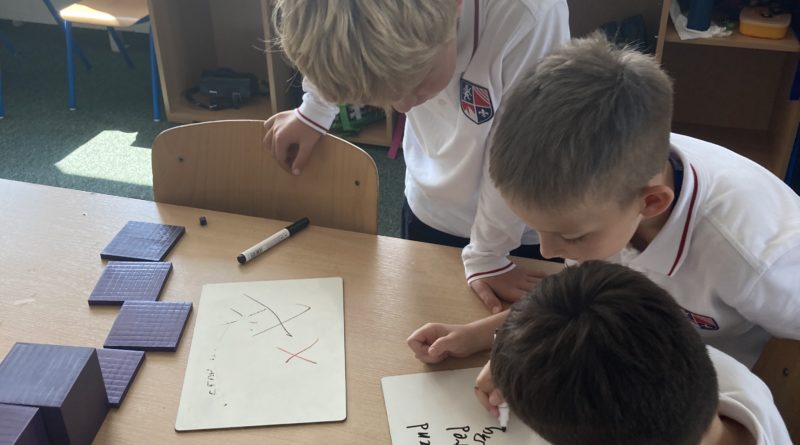The power of manipulatives
Manipulatives are a great way to make learning memorable. We live in a fast-paced world where students are always looking for a way to finish their work quickly, and get onto the next thing. Using manipulatives allows for students to touch, move and interact; slowing down this need for speed and thus becoming an effective strategy to understand complex concepts.
In the following images, learners are working with base-ten blocks, a classic manipulative used to teach place value and arithmetic. By physically manipulating these blocks, students gain a deep understanding of how numbers work and how they can be combined and regrouped. This hands-on approach helps build a solid foundation for more advanced mathematical concepts.
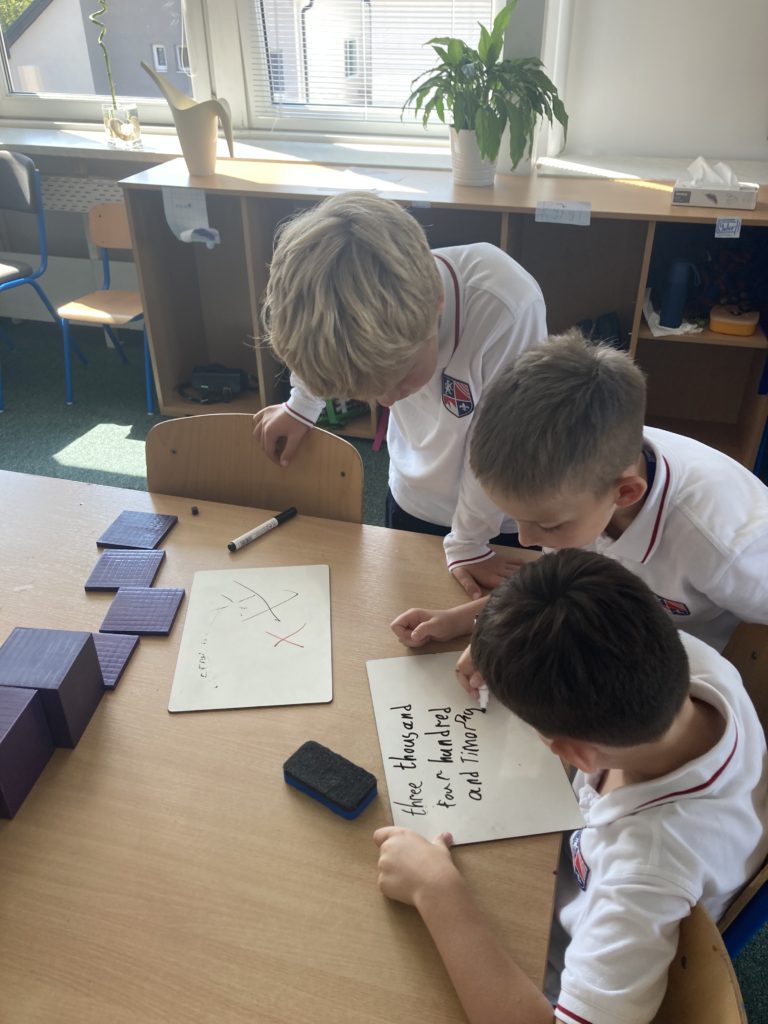
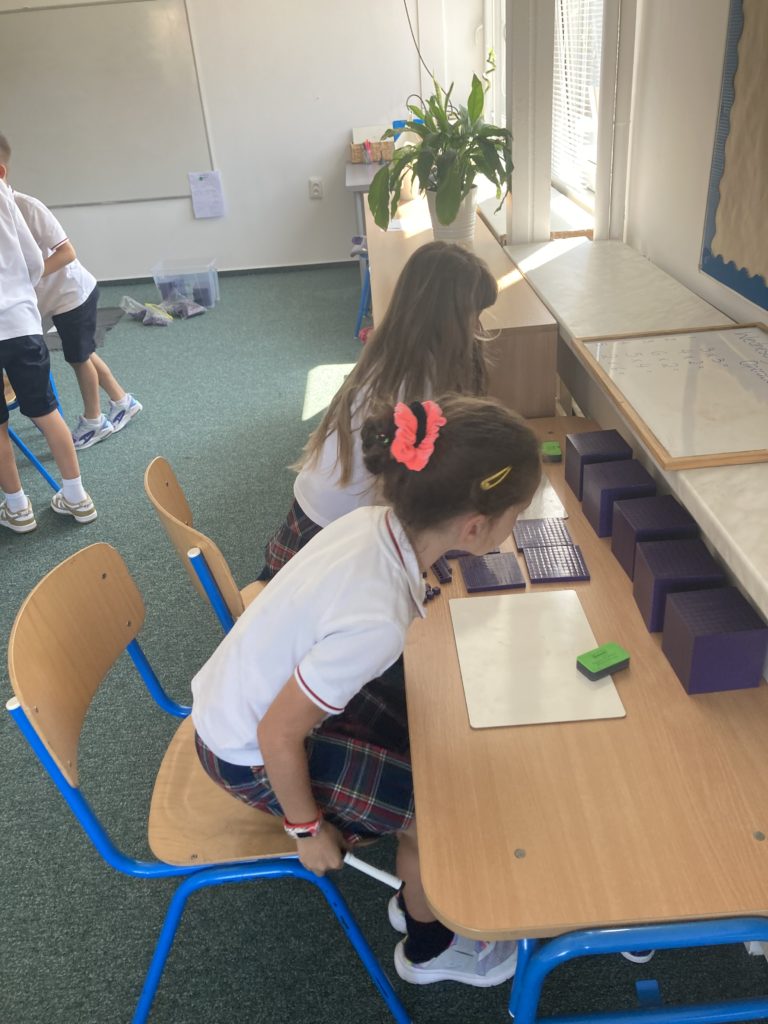
Manipulatives also foster collaboration among students. In the next photo, a group of classmates collaborates on a science project, naming parts of the body that they already know, as we start off our unit about different body systems. This type of work encourages peer-to-peer learning and problem-solving, and leads to positive team-work experiences and discussion opportunities.
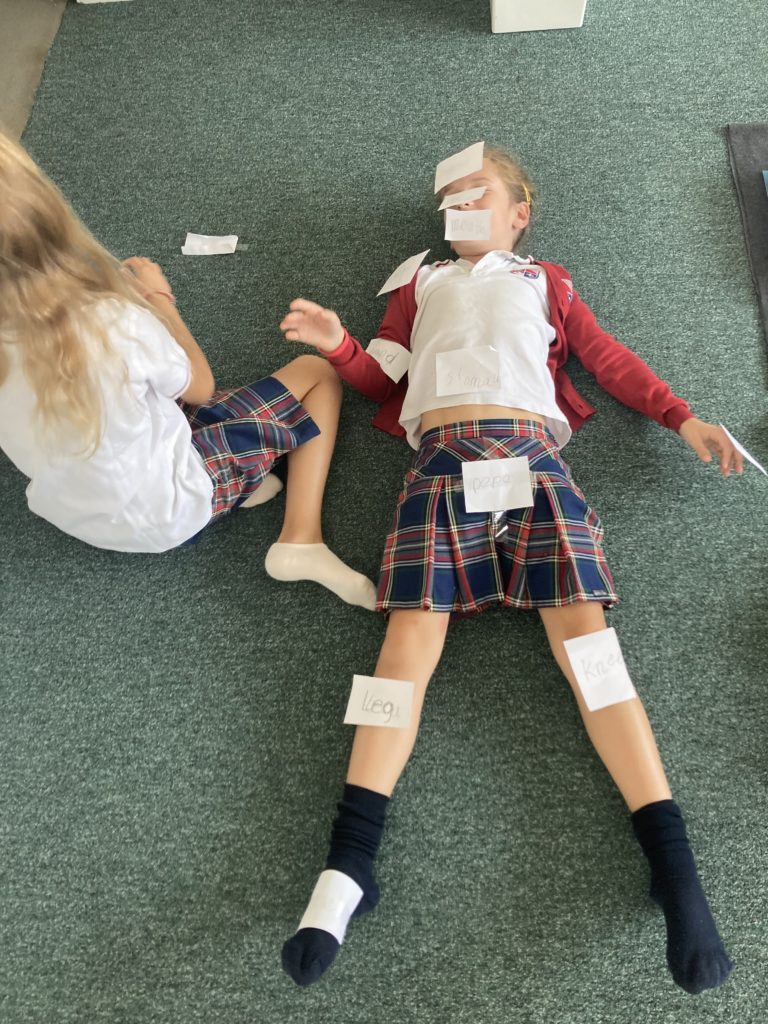

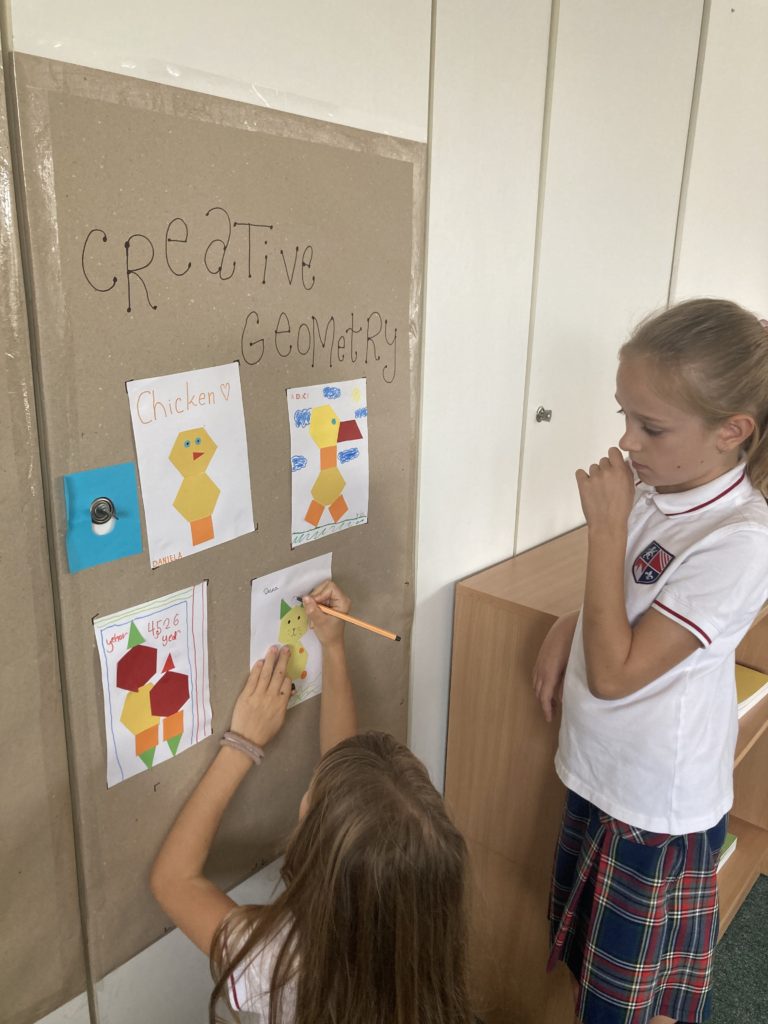
In the digital age, where information is just a click away, one might wonder about the role of a dictionary in the classroom. But let’s not underestimate the magic it can bring to young learners. Dictionaries are not just reference books; they are keys that unlock a world of words, curiosity, and self-reliance. When we introduce dictionaries to learners, we empower them to explore language independently, building essential skills in vocabulary, spelling, and comprehension. It’s not just about finding definitions; it’s about fostering a lifelong love for language and the joy of discovering new words, while also encouraging confidence and resourcefulness.
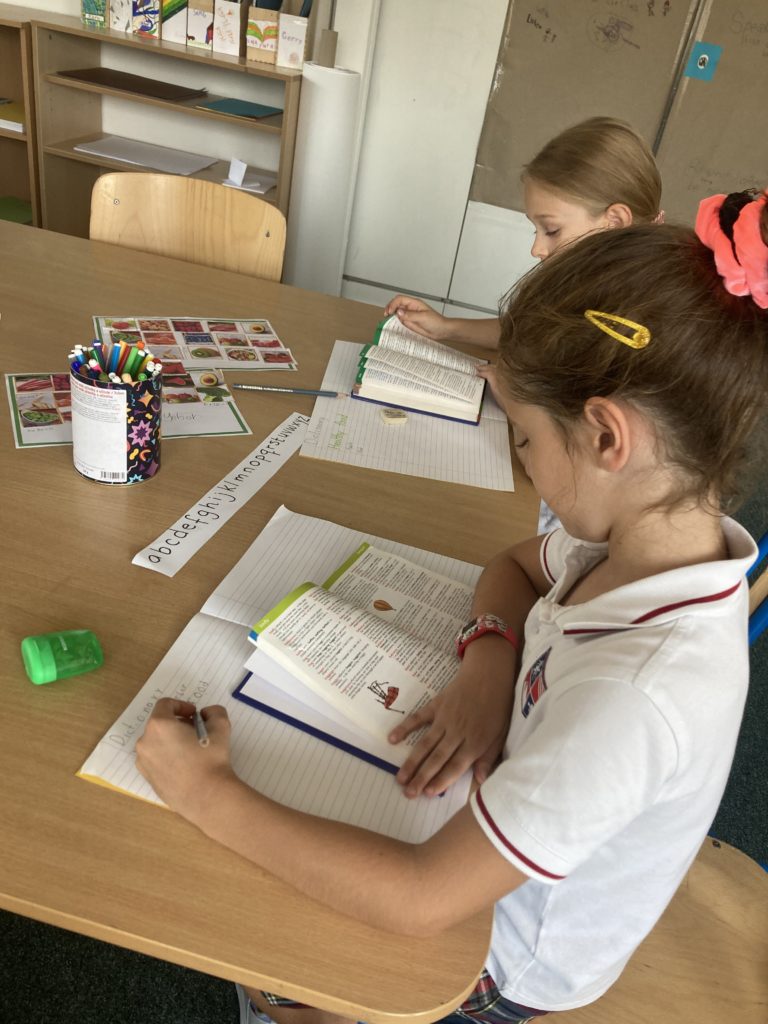
Written in collaboration with chatGPT.

